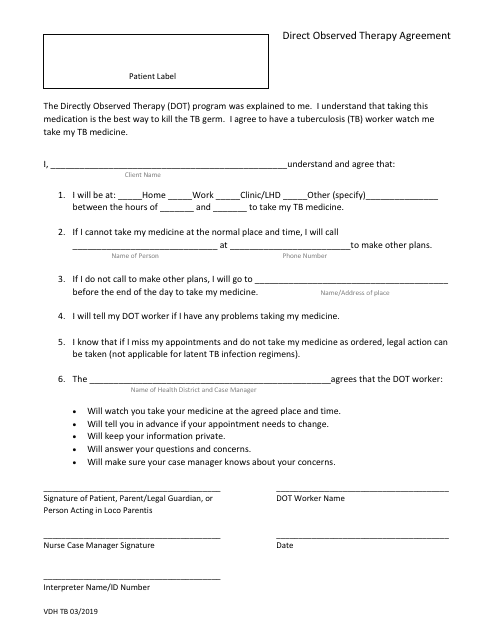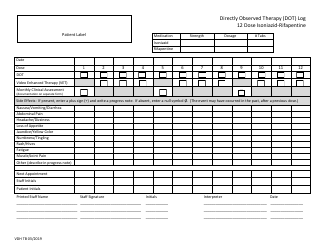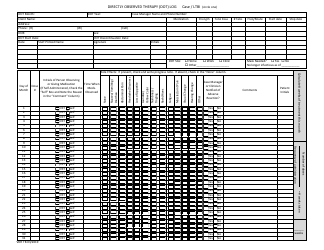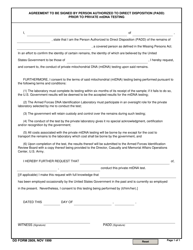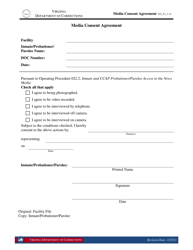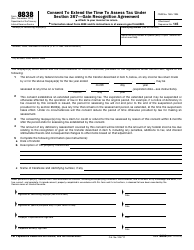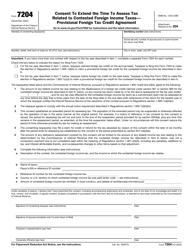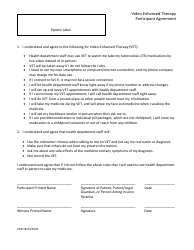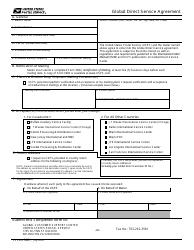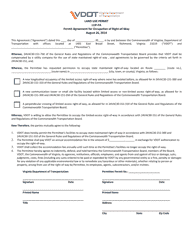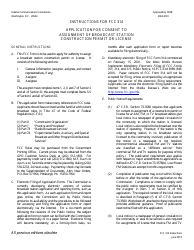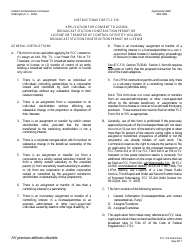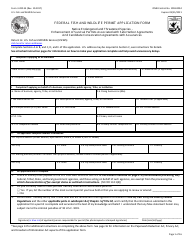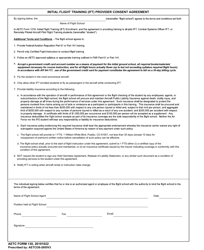Direct Observed Therapy Agreement - Virginia
Direct Observed Therapy Agreement is a legal document that was released by the Virginia Department of Health - a government authority operating within Virginia.
FAQ
Q: What is Direct Observed Therapy (DOT)?
A: Direct Observed Therapy (DOT) is a strategy used to ensure that patients properly take their medications by having them directly observed by a healthcare provider.
Q: Why is DOT used?
A: DOT is used to ensure treatment adherence and reduce the risk of drug-resistant tuberculosis (TB) by making sure patients complete their full course of medication.
Q: Who is eligible for DOT in Virginia?
A: Any individual diagnosed with active TB disease or latent TB infection (LTBI) who requires treatment can be eligible for DOT in Virginia.
Q: How does DOT work in Virginia?
A: In Virginia, a healthcare provider will directly observe each dose of medication to ensure the patient is taking their medication correctly.
Q: What are the benefits of DOT?
A: The benefits of DOT include increased treatment adherence, reduced risk of drug-resistant TB, and improved treatment outcomes.
Q: Is DOT mandatory in Virginia?
A: DOT is not mandatory in Virginia, but it is recommended for patients with active TB disease or LTBI.
Q: Can a patient refuse DOT?
A: Yes, a patient has the right to refuse DOT. However, their healthcare provider may assess the risks and benefits of self-administered therapy.
Q: Are there any costs associated with DOT in Virginia?
A: In Virginia, there may be some costs associated with DOT, such as transportation to the healthcare facility. However, financial assistance programs are available for eligible patients.
Form Details:
- Released on March 1, 2019;
- The latest edition currently provided by the Virginia Department of Health;
- Ready to use and print;
- Easy to customize;
- Compatible with most PDF-viewing applications;
- Fill out the form in our online filing application.
Download a fillable version of the form by clicking the link below or browse more documents and templates provided by the Virginia Department of Health.
